There is more to New Zealand than just stunning scenery, and nowhere is that more apparent than at the Waitangi Treaty Grounds. New Zealand’s most significant historic site is a fascinating journey into the country’s unique history.
Our journey starts out with the intricately carved war canoes and ends up with a partnership between the British and the Māori people. It’s the history along the way that makes the Waitangi Treaty Grounds a must-see destination for visitors to the country as well as locals.
Entry to the treaty grounds includes a guided tour as well as a cultural performance and museum entry. I strongly recommend doing all three while you explore the grounds. I have been here multiple times, each time with overseas visitors who, like me, found the stories told by our guide both engaging and captivating.
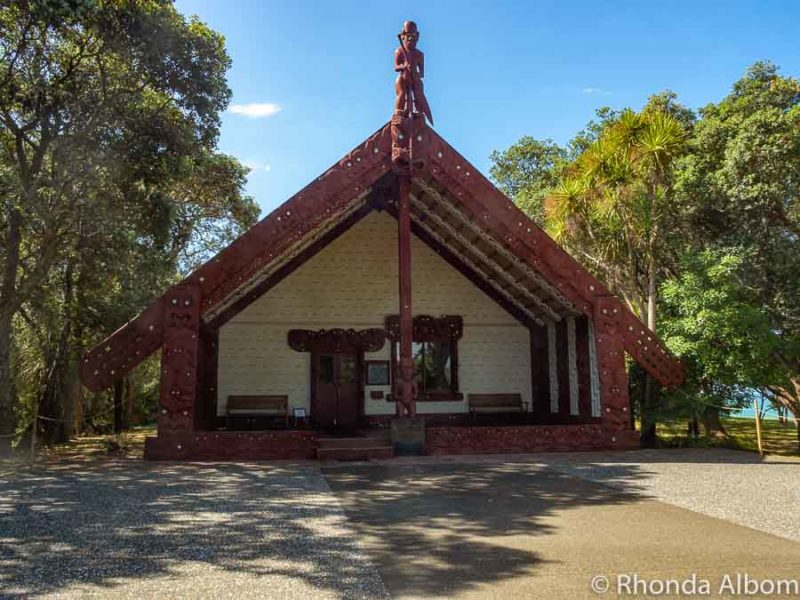
What is the Treaty of Waitangi?
The Waitangi Treaty Grounds marks the location of the signing of the document that created the New Zealand we know today. On the 6th of February, 1840, the Māori and British people created a nation under one rule . . . and a controversy that is still being resolved. The problem stems from the interpretation of a single word: sovereignty.
The agreement between the Crown and the chiefs of the United Māori Tribes was in two languages, and they are not the same. The English version gave the crown sovereignty over the land.
As there is no direct translation (English to te reo Māori) of the word sovereignty, the translator used the word governance. Therefore, the chiefs believed they signed an agreement that allowed the Crown only governance in return for protection. There is much more to this issue than just this simple explanation.
February 6 marks Waitangi Day, the National Day of New Zealand, an annual designated public holiday. There are both Waitangi Day celebrations and Waitangi Day protests throughout the country, with the most significant of these at Waitangi grounds.
What’s at the Waitangi Treaty Grounds?
Start with our 45-second video:
Waka (War Canoes) at Waitangi Treaty Grounds and the arrival of the first Europeans
Headphones on, we could all hear our guide, a descendant of one of the chiefs. We began our tour with a short walk to the waka house; all the while our guide pointed out native birds, key plants, and how the Māori people use them.
As we approached the waka house, he began telling a story of New Zealand, from 1642 when Dutchman Abel Tasman became the first European to discover New Zealand. The Māori people had arrived 650 years earlier. With only 1000 years of history, New Zealand remains one of the world’s youngest nations.
According to our guide, the Māori had never seen a watercraft like the ships of the Europeans. When Tasman arrived, the Māori chief blew a horn to determine if these strange men had come in peace.
The trumpeted reply from Tasman’s ships sounded like war cries to the Māori people. They immediately climbed into their waka taua (war canoes) and headed out for a very unfriendly welcome to Tasman’s men. The defeat had Tasman pulling up anchor and sailing away.
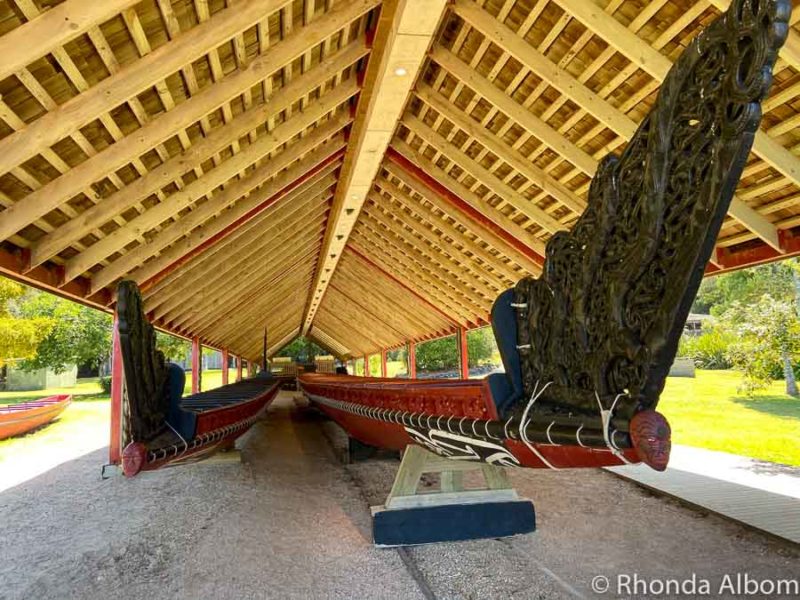
These are not the same waka that we see today on the treaty grounds. In fact, that particular event took place in Golden Bay, a different part of the country. However, it is a significant piece of New Zealand history, as is the ceremonial waka on display at the treaty grounds.
Waka details
These hand-carved waka are impressive. Carved from kauri trees, the pieces are lashed together with flax rope. Once wet, the rope shrinks, pulling the swelling wood sections together. The dimpling on the sides is by design to allow the waka to go faster through the water. The larger of the waka weighs 6 tonnes dry and 12 tonnes wet.
A view from the top shows beams running width-wise. While warriors can sit upon the beams, they are actually there for strength. More often, the warriors will be inside, below the beams. Possibly the most famous guests onboard one of the Waitangi waka were Charles and Diana, the Prince and Princess of Wales, during their 1983 tour of New Zealand and Australia.
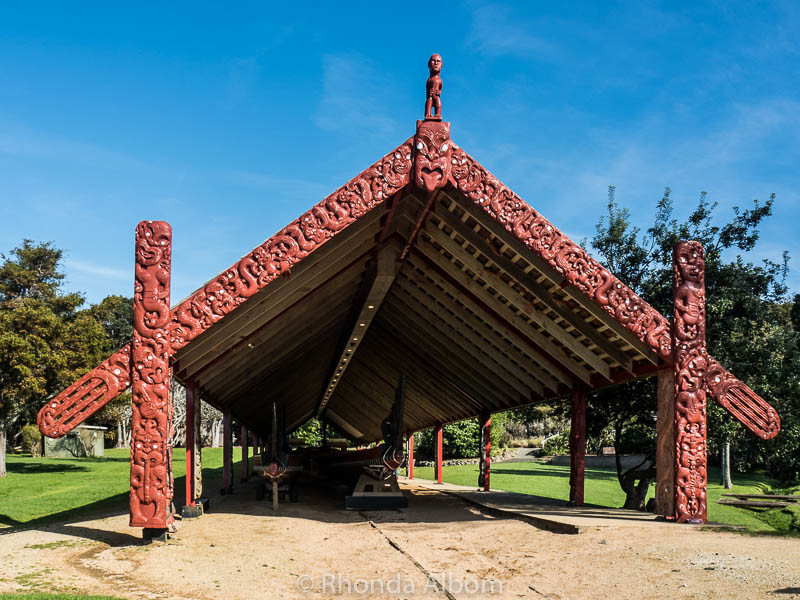
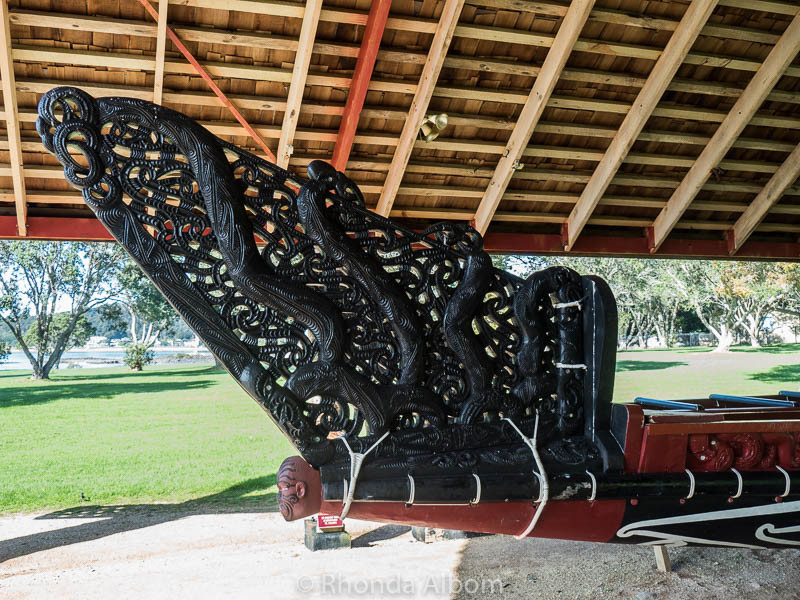
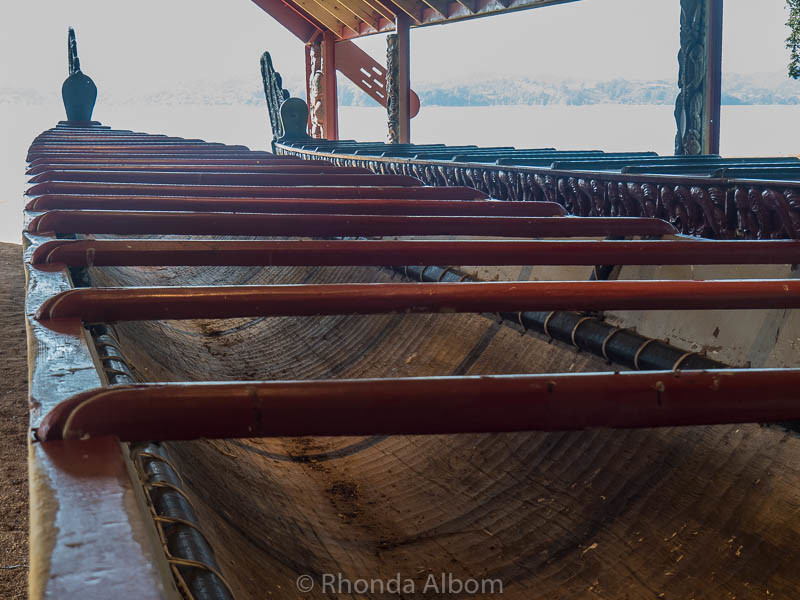
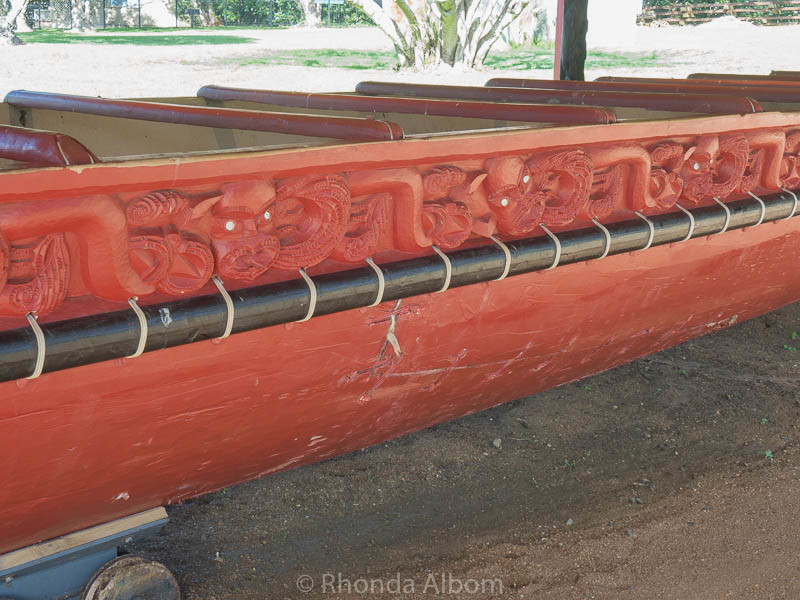
Pōwhiri, a traditional Māori greeting
We scheduled our cultural show to be right after our tour. This is a great way to do it, as the timing works perfectly. Plus, the tour starts at the visitor centre and ends at the meeting house, so it was just a few minutes to wait for the show.
Our experience began with a pōwhiri, a traditional Maori welcoming ceremony. Each group of visitors needs to choose one chief to be their leader. We have seen this many times, both here and at other events. To my surprise, people rarely volunteer for the role. I am recommending that you do. It is a fabulous cultural experience, and, as a bonus, you sit front row centre for the show.
Several years ago, Jeff was our group’s chief. A Maori warrior lay a rautapu (a symbolic offering – often a small branch) on the ground. Jeff picked it up, thus symbolizing that we come in peace. The warriors then welcomed our group inside for the cultural performance, following a hongi (shared breath) between the two chiefs.
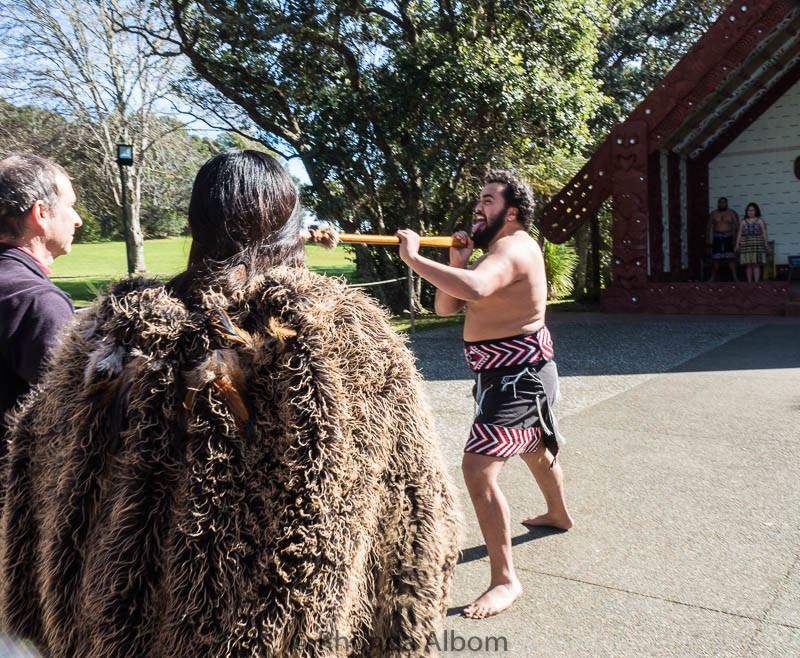
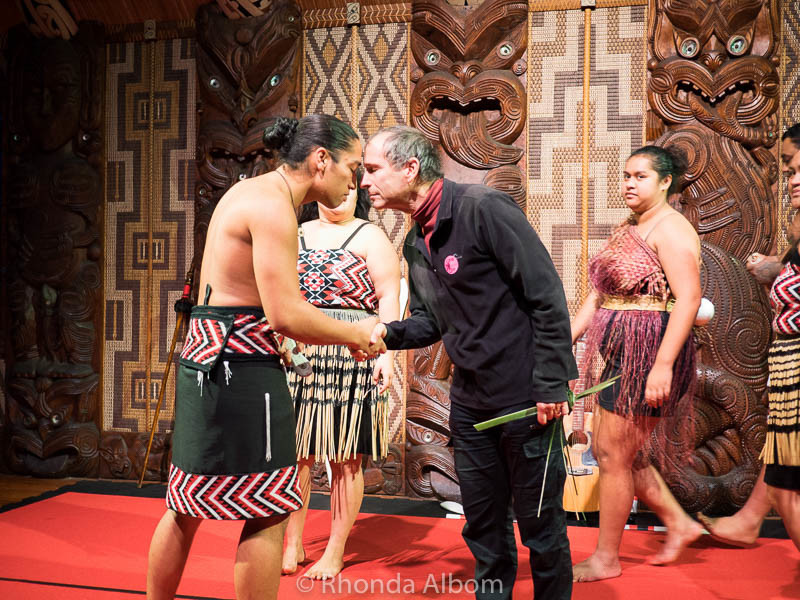
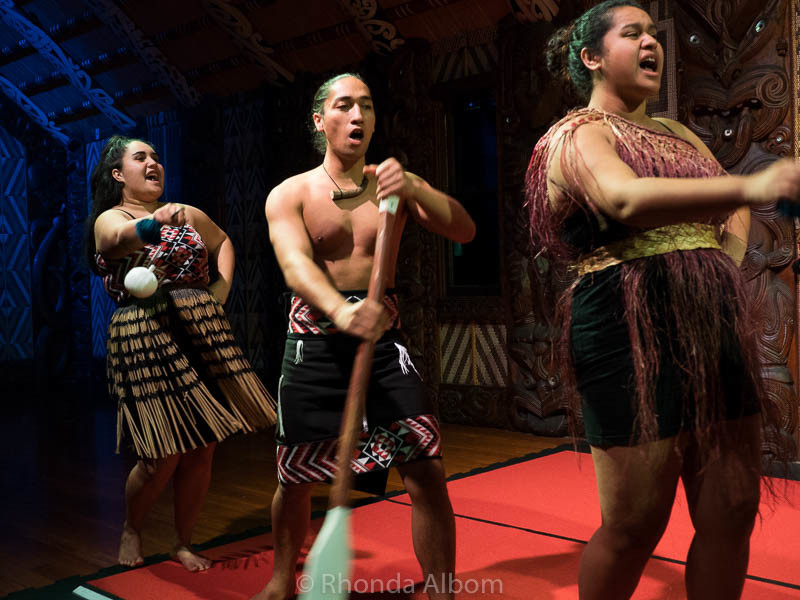
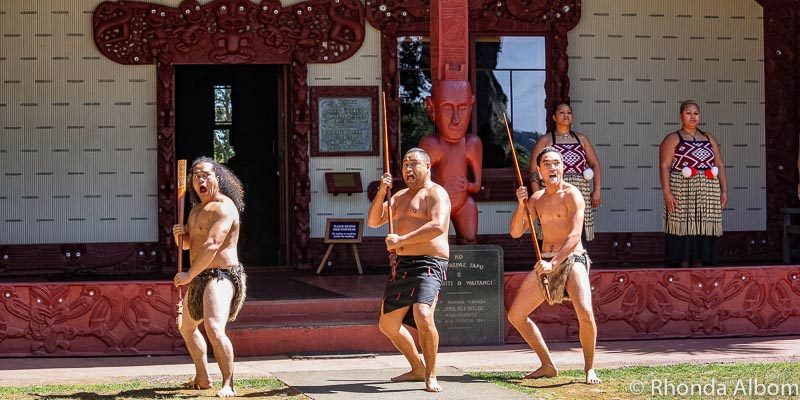
Te Whare Rūnanga, a traditional meeting house at Waitangi Treaty Grounds
The Maori cultural performance takes place at Te Whare Rūnanga, which is a traditional carved meeting house built of timber and natural materials. Actually, this one deviates from tradition as it faces south, and the carved panels inside represent all of the Māori iwi (tribes) in New Zealand, rather than just local styles that would be found around the country.
The show consisted of dances, songs, and weaponry. More importantly, there was an easy-to-understand narration explaining the actions and the culture.
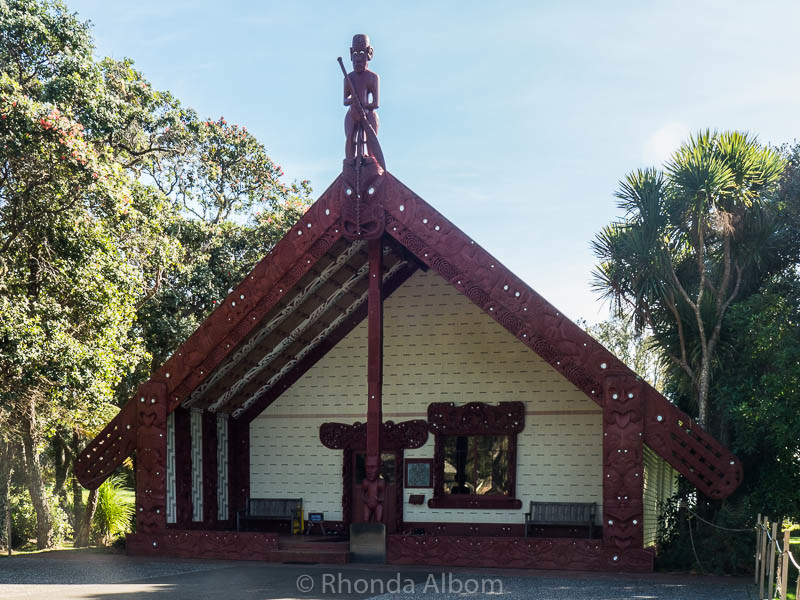
Treaty House
Now called the treaty house, it was originally the home of James Busby, the “British Resident” appointed by the Crown in New Zealand. It is located near the meeting house. The house, brought to New Zealand disassembled, has carved markings at the joints that aided in reassembly.
Original furnishings adorn most rooms. However, one room features a copy of the treaty made in the late 1800s before it began to age. The originals, both English and Māori, are safely stored in Archives New Zealand in Wellington.
Busby, along with James Stuart Freeman and William Hobson, co-authored a draft treaty in English. Henry Williams (missionary) and his son Edward translated it into Māori over one evening.
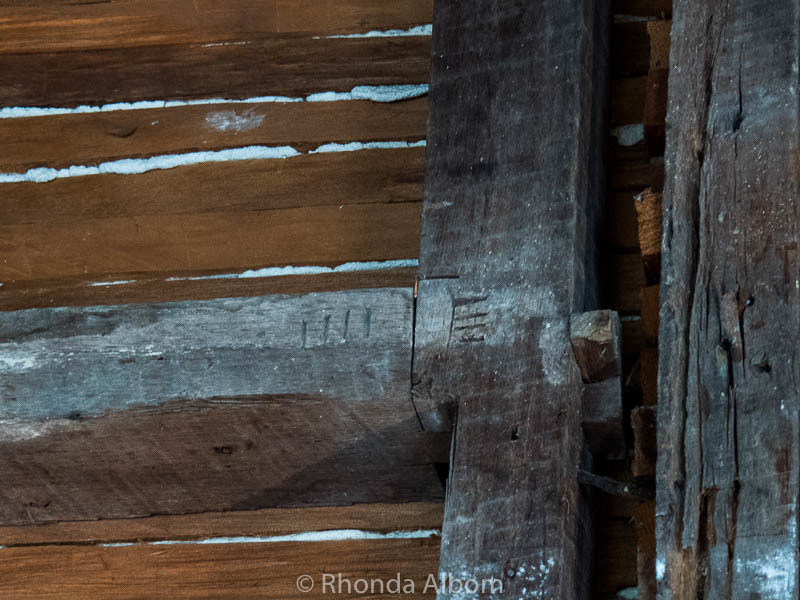
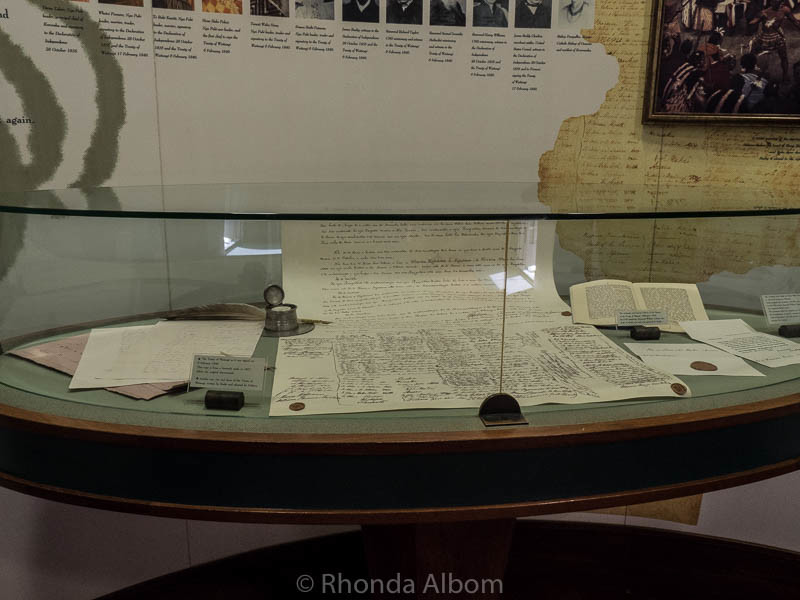
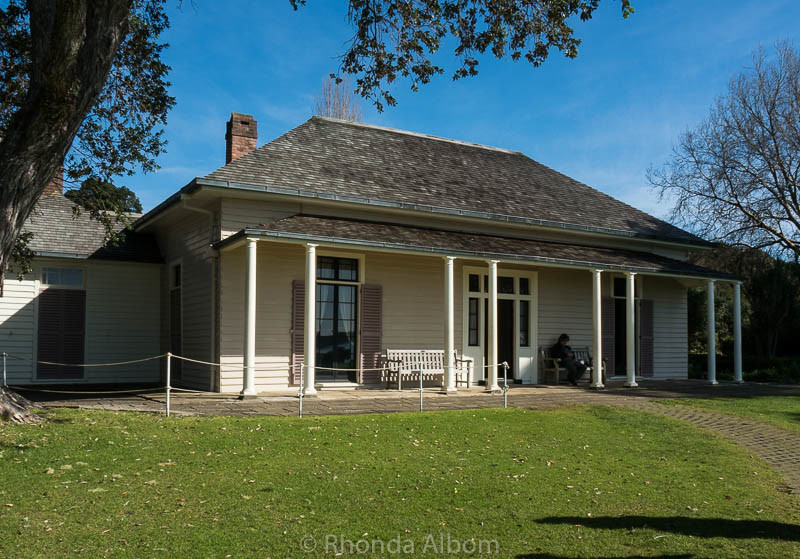
Te Kōngahu – the Museum of Waitangi
The Museum of Waitangi allows further exploration of New Zealand history through stories, artifacts, and video. Allow about an hour to go through, or longer if you want to read it all. The museum itself is a work of art, built to fit in with the landscape (see it in the video above).
Amongst the many interesting museum artifacts is the flag of the United Tribes of New Zealand. The flag had been first created as Busby needed a trading flag when he sailed so as not to be thought of as a pirate.
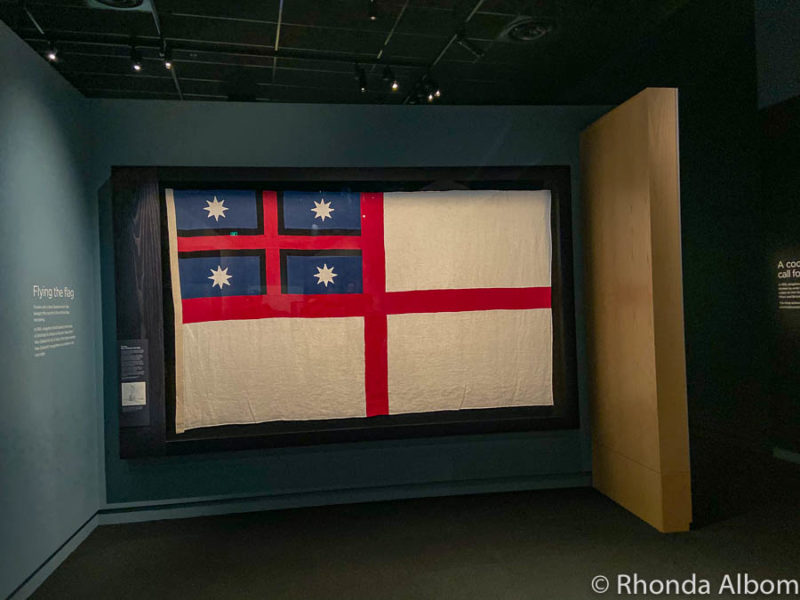
Views from the grounds
Marking the spot where the treaty was signed in 1840, the flagstaff flies three flags: the current New Zealand flag on top, Te Kara, the original flag of the United Tribes of New Zealand, and the British Union Flag. From here, we enjoy expansive bay views.
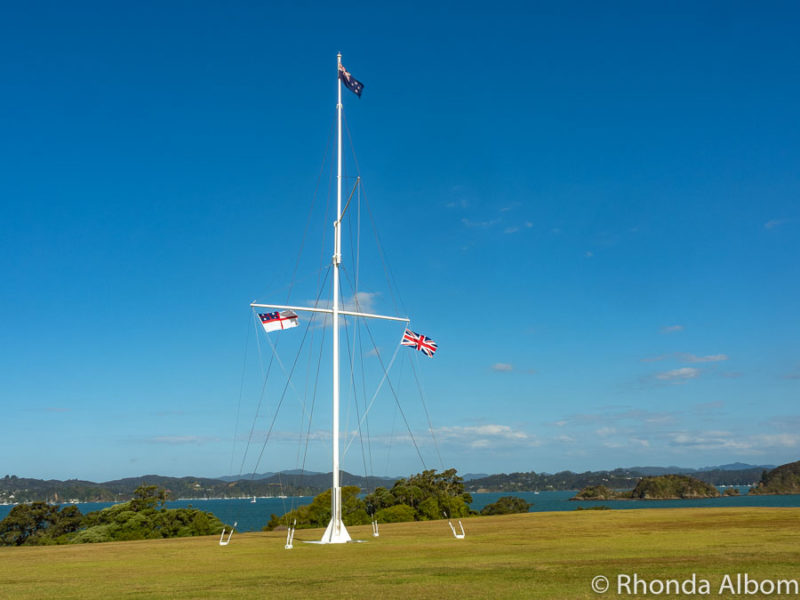
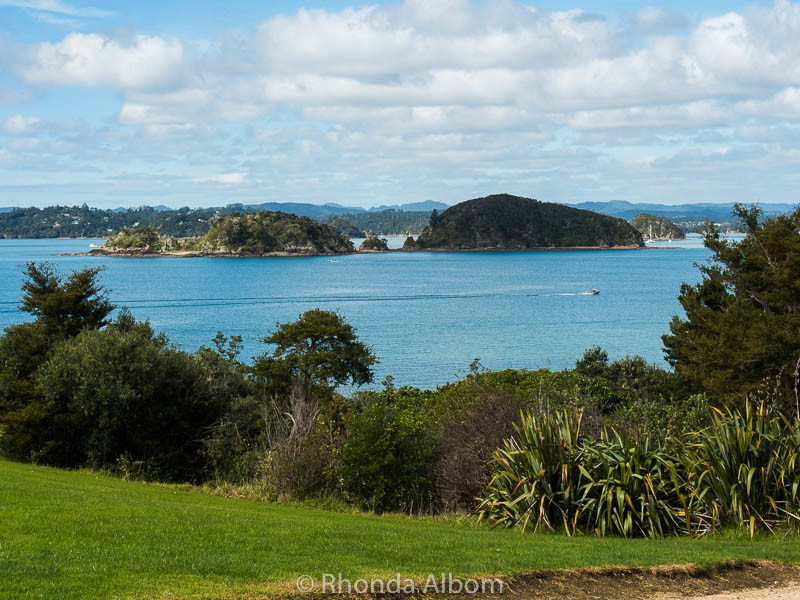
How to visit the Waitangi Treaty Grounds
You will want a minimum of three hours on the grounds, but more is better. We have been here half a dozen times, mostly with overseas visitors. Typically, we spend between 3-4 hours.
Day pass to Waitangi Treaty Grounds and discount options
The best way to understand and enjoy the treaty grounds is to do it all: the guided tour, cultural show, museum, treaty house, grounds, and carving studio. Fortunately, it is all included in the day pass, which actually allows you two days of entry and is available at a discount on selected entries.
There is no one-day-only option, as the second day is like a free gift. We recommend taking advantage of the opportunity. Return to capture the photo you missed or just to relax on the beautiful grounds. If you arrive at peak times, there could be a queue to enter. Advanced tickets are available. Reserve your Waitangi Treaty Grounds day pass.
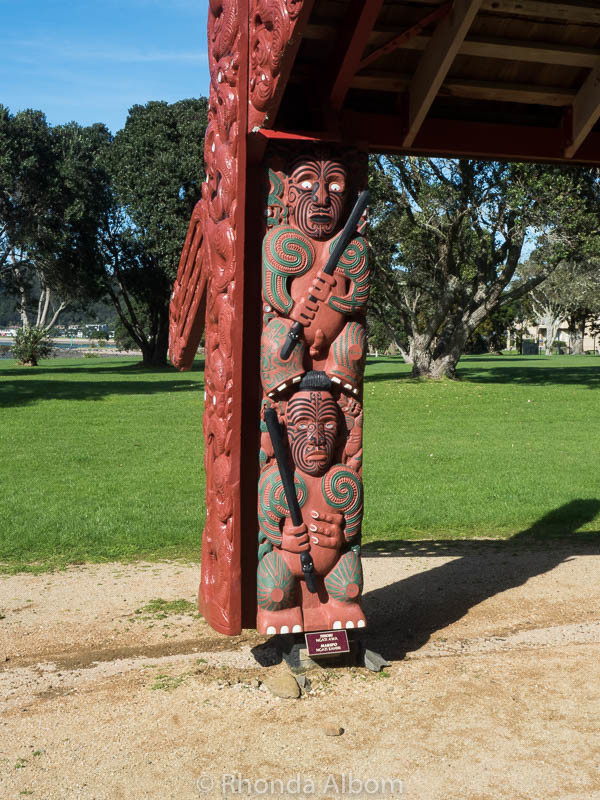
Day pass with hangi dinner and concert and discount options
If you want a more complete cultural experience, add a hangi dinner and concert to your day pass after the grounds have closed to the general public. Note: this option is only available from October through March and on Tuesday, Thursday, and some Saturday evenings.
You are welcomed with a drink and a bit of history. Next, watch the unearthing of the traditional hangi dinner. It has been steaming for a while in a traditional Māori earth oven, blending the flavours into a melt-in-your-mouth perfection. While dinner is set out, enjoy a guided walk through the native bush, followed by a Māori concert; then, you can enjoy the delicious flavours at the hangi dinner served buffet-style.
If you have never experienced a hangi (we attended one recently in Rotorua), this may be a once-in-a-lifetime opportunity. The ticket for the hangi and concert includes the day pass described above. Reserve your Waitangi Treaty Grounds day pass with hangi and concert here.
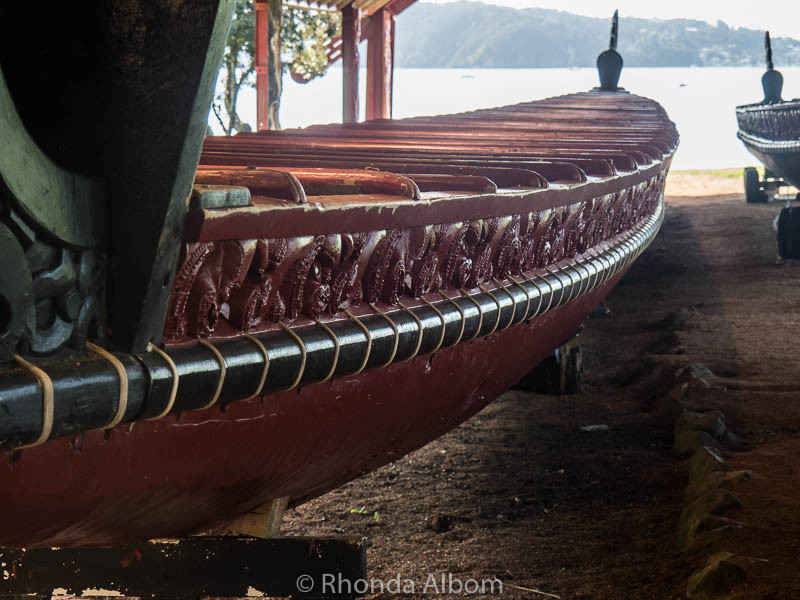
More on visiting Waitangi Treaty Grounds
- The Waitangi Treaty Grounds are located in the Bay of Islands, 2 kilometres north of Paihia.
- There is plenty of free parking.
- The grounds and museum are open every day from 9 am to 5 pm, with extended hours in summer.
- Also on the grounds is a Māori carving studio, the Wharewaka cafe, and a gift shop.
- A day pass is valid for two days and includes a guided tour, cultural performance, museum, and ground entry. The tours and performances are on a time schedule.
- A hangi and concert option is available on Tuesday, Thursday, and Saturday summer evenings.
- More information is available on the official website.
- If you are heading up north in New Zealand to the Waitangi Treaty Grounds, consider adding a few days with this Northland itinerary from Auckland to Cape Reinga.
Save on your NZ trip with these resources
These are our go-to companies when we travel. We believe this list to be the best in each category. You can’t go wrong using them on your trip too.
- Flights: we use Expedia for the best and cheapest flight options.
- Accommodations: we use Booking.com (hotels), Bookabach (self-contained in NZ), or Hostelworld (budget). See all our personal favourite NZ hotels here.
- Cars (gas or electric): we use RentalCars to search for deals and dealer ratings.
- Motorcycles: we have heard good things about BikesBooking.
- Campervans: Our readers prefer Jucy, and we get consistently great feedback.
- Activity discounts: we check Bookme.com for discounts of up to 70% on activities.
- Private guides: we do have a go-to when we hire a private guide from Viator.
- Travel Insurance: while not required, we always opt for travel insurance and start at InsureMyTrip to compare coverage plans.
Check out our travel resources page for more companies that we use when you travel. And don’t forget to download our free New Zealand packing list when you sign up for our newsletter.
Save for your visit to New Zealand
If you enjoyed this article, please share it on social media and save it for later on Pinterest.
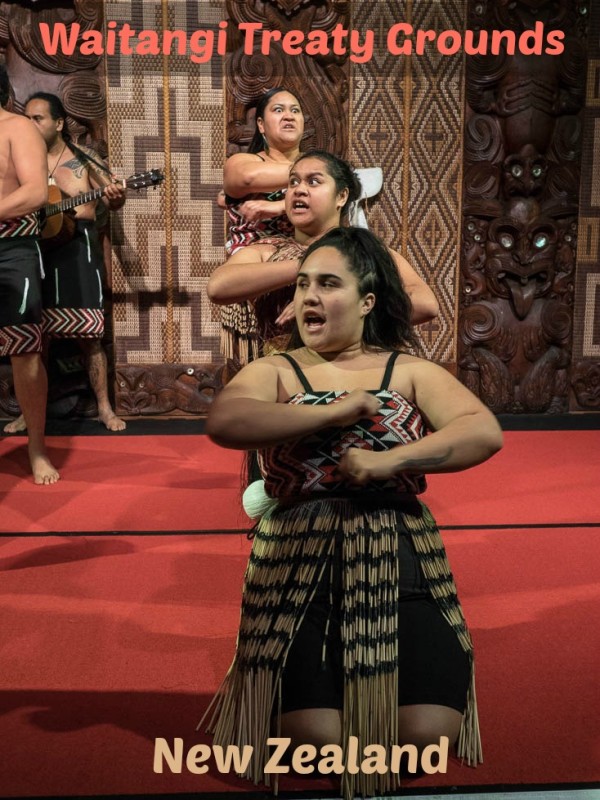
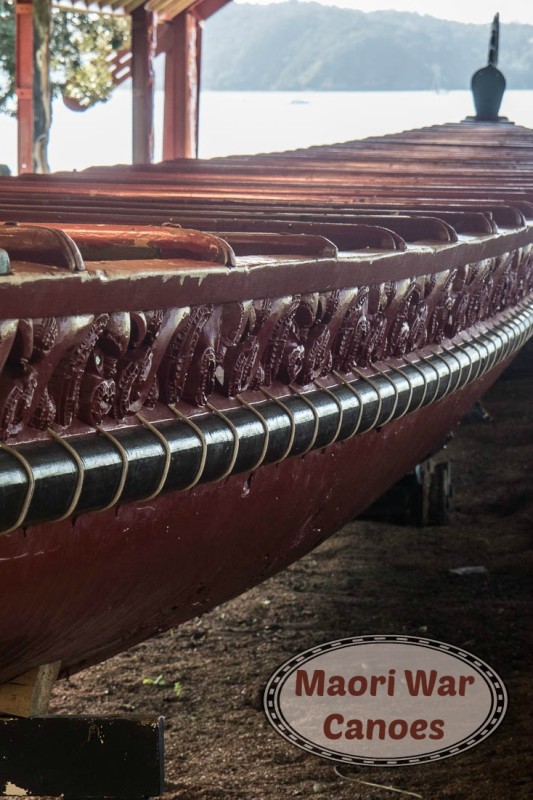
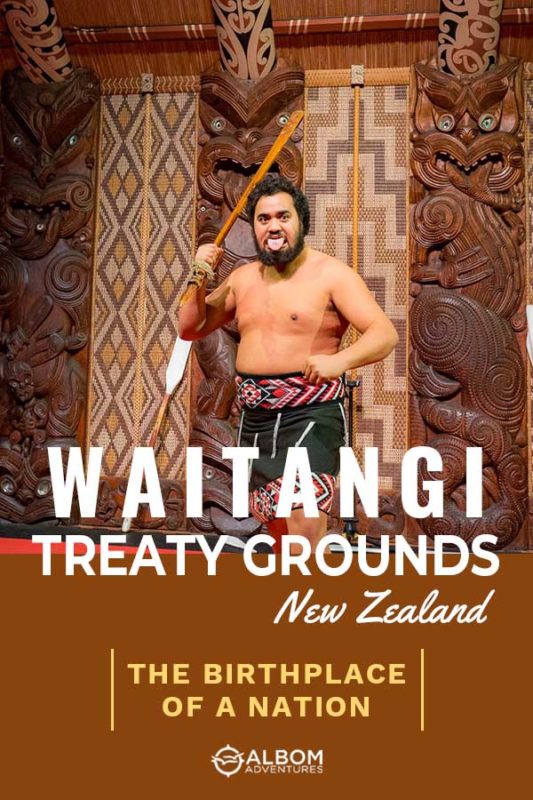
Have you been to the Waitangi Treaty Grounds?
For more on New Zealand, start here: New Zealand Road Trips: Itineraries for North or South Island Adventures, or you might like …
Disclaimer: We worked with the local tourism board, NorthlandInc, as well as the Waitangi Treaty Grounds to aid in writing this page. The opinions expressed here are strictly our own.

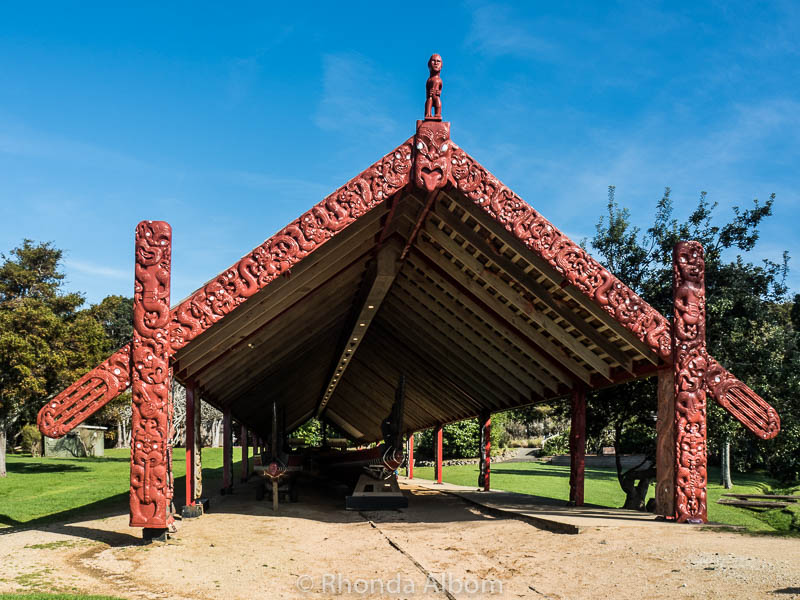
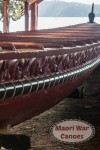
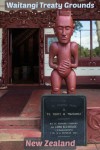
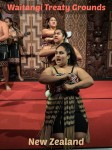
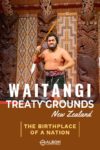
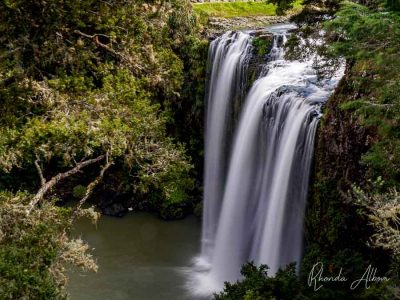
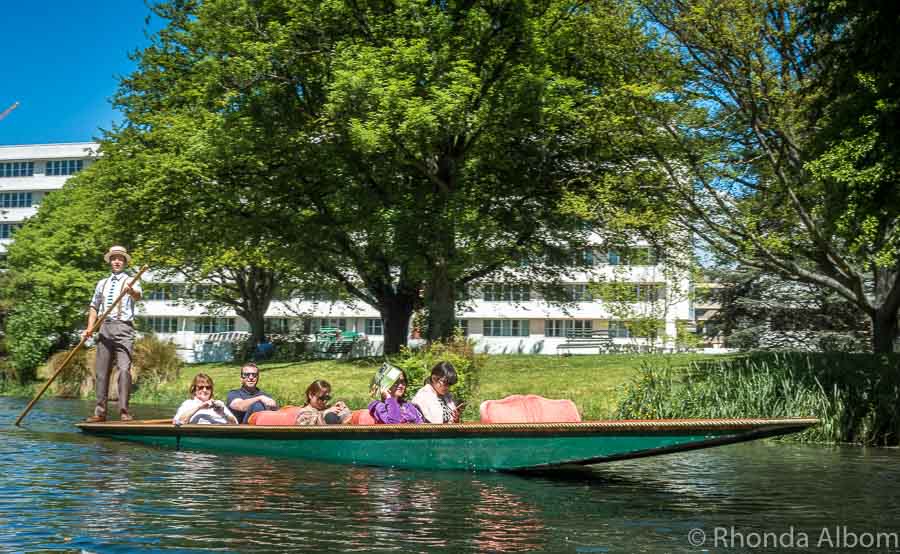
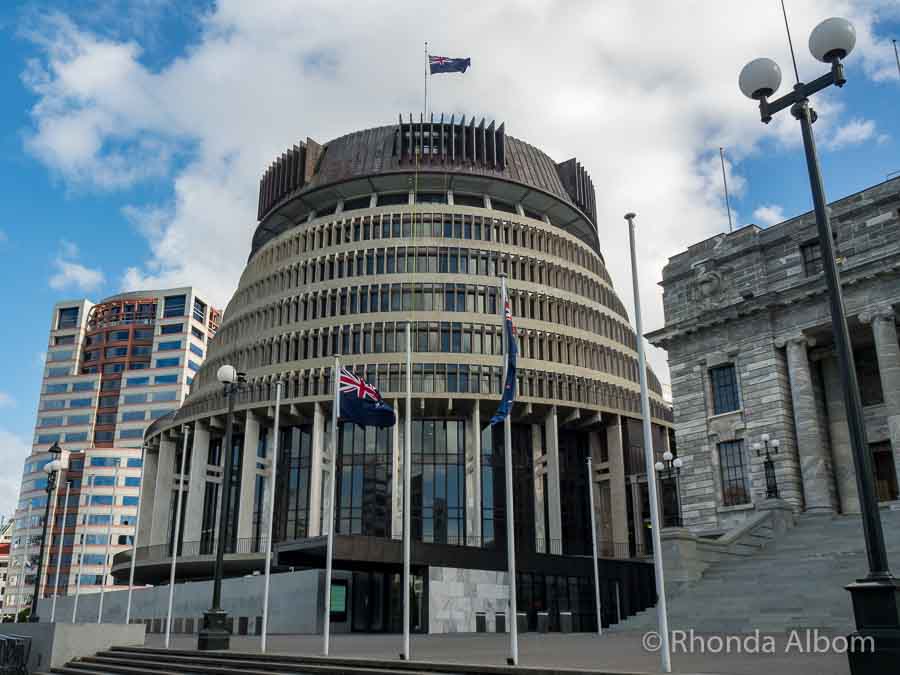
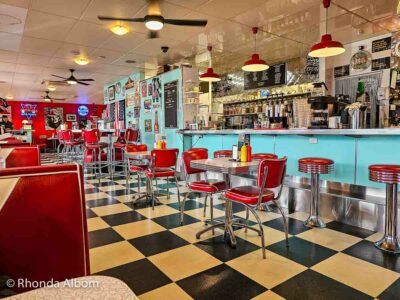
Paul Pietrangelo
What a unbelievable blog Rhonda. Ngatokimatawhaorua is an interesting name. New Zealand has so many interesting facets that it would be so difficulty to spend time learning about this island. Thank God we have you showing us about this wonderful place. Thanks my friend.
Cruisin Paul
Shiloh
That’s such an interesting history. I can see why Feb. 6th would be marked with both celebrations and protests.
Yina
I love cultural trips! It gives so much more meaning to visiting places. If I have the opportunity to go to NZ thanks to you this is def a place I will got to!
Lerato
Never heard of this place before. New Zealand seems like a great country to add to my bucket list. Thanks for this detailed guide, I enjoyed reading through it
Alan Bates
Some interesting history and cultural information. I learned something today because of you.
Nina Out and About
This is such a great, informative post! I lived in NZ for a year but never got to Waitangi. Now it feels like I did!
Leah
I honestly know very little about the history of New Zealand so it was so nice to get to learn a little bit! You don’t see any kiwi history in U.S. school books unfortunately.
Paula McInerney
I would definitely want to experience this. It seems synonymous with New Zealand, and an amazing way to learn about the culture and history. Seriously, I need to go to NZ.
Jessica
Sounds like an interesting place to visit to learn about New Zealand’s history and culture, and the new museum certainly adds to its appeal! ~ Jessica
budget jan
The dancers look so engrossed in their performance, it would be a pleasure to watch them and listen to the narrative.
messymimi
If i’m ever blessed enough to get to New Zealand (which i really want to do), this will be at the top of my list of places to go.
Ruth
Very interesting Rhonda! Even in one language, one thing means something in one country and another in another country. I know that is true in Spanish. So, I can see how difficult it can be to reach a complete understanding when people speak different languages. I am reading more about the issue in the link you provided.
Yasha
As an Australian, it’s a little difficult to confess that I’ve not been to New Zealand. It’s always been so close, and I have chosen the faraway places. But I promise myself that I will explore our close neighbour. This looks like a place that should top the list of not to miss places.
Anda
Waitangi Treaty Grounds seems definitely like one of those living history museum everybody should see. I’m sure those two European students enjoyed it a lot.
Kreete
Some great photos here! I am planning a visit to NZ and it seems my list of places to visit grows day by day. Thanks for sharing and explaining the treaty too! Your website is a great source of information for me!
eileen g
this looks like a really worthwhile destination. It’s interesting to see where NZ, Australia, Canada and the US are alike and different in their treatment and mistreatment of the original native people in their countries. it’s the darker side of colonization for sure.
Jill
I love the shared breath photo – what a unique concept I’ve not seen elsewhere! Great photos – looks like quite an interesting place to visit.
Jim ~ ReflectionsEnroute
Great post Mrs. Chief! We’ll need to visit Waitangi Treaty Grounds on our next visit.
Lexa Cain
Thanks for the explanation about the treaty. One of my friends visited and found the rules about dealing with the Maori people confusing. I also have a CP who lives in NZ. She writes YA Contemporary fiction, and I suggested she write something with Maori characters in it. Western people like learning about different cultures. But she said she was afraid to because there can be backlash from the Maori community.
Ahila
Enjoyed your post, Rhonda. I have started planning my big trip to New Zealand next year so have added this to my places to visit.
Ellen
I’d have to agree – Waitangi is a must see destination for folks. We thoroughly enjoyed our time there and learned heaps about NZ history.
Rhonda Albom
Very true, but at least New Zealand is working or resolving some of the issues.
Merlinda Little
What ana mazing experience! I will now call you Mrs Chief =)
Rhonda Albom
Thank you, I have asked my family to call me Mrs. Chief, but they only laughed at me. 🙂
Sandee
I would love to visit there. Treaties are often not worth the paper they are written on. Ask the American Indians. Just saying.
Alex J. Cavanaugh
I bet that was a great show to see. (And you got some great shots of it.)
I hope things were eventually ironed out after the treaty was signed. Funny how one word can make all the difference.
Jackie
This sounds like a great place to visit. I would like to go back to NZ!
Amy
One of my favourite spots up north, last went there about 10 years ago, should go again 🙂
Lydia C. Lee
I know little of NZ history, but currently reading Barkskins and interestingly they go there in the 1800’s….so this post is timely for me.
Jeanna
That shot with hubby head to head breathing with the other chief is a classic. I travel around WI for food, music and outdoor photo ops. I guess I don’t go too far anymore but who knows. I envy your travels and thank you for your photos.